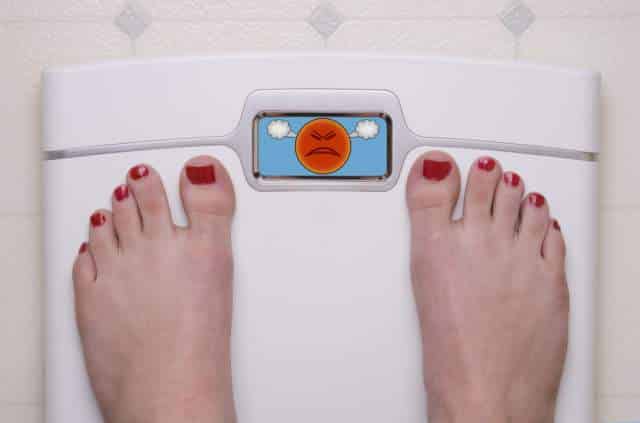Science Mom: Amber Teething Necklaces Are Bullsh*t, Deal With It
 Amber teething necklaces are all the rage in crunchy parenting circles, which is appropriate, because seeing them on a child actually sends me into a rage. The short answer to “are teething necklaces effective?” is “no”; the long answer is “hell no”. In case that compelling argument doesn’t convince you, I’ve assembled an FAQ about the function (or lack thereof) for these necklaces. Feel free to share the science with the crunchy friends and family members in your life.
Amber teething necklaces are all the rage in crunchy parenting circles, which is appropriate, because seeing them on a child actually sends me into a rage. The short answer to “are teething necklaces effective?” is “no”; the long answer is “hell no”. In case that compelling argument doesn’t convince you, I’ve assembled an FAQ about the function (or lack thereof) for these necklaces. Feel free to share the science with the crunchy friends and family members in your life.
Q: But how do you know amber teething necklaces don’t work?
A: Well, first of all, a pretty large percentage of the sales pitches for the things that I’ve seen make appeals to ‘organic, natural energy’ or ‘electromagnetic activity’. Any purported remedy that can’t even explain how it actually works beyond ‘energy’ is pretty shady. Every substance in the universe contains stored energy – the stuff is pretty much the definition of ‘natural’ – but I wouldn’t recommend tying a chunk of sodium around your kid’s neck, either.
Q: I read that the amber contains succinic acid, which gets absorbed into the baby’s skin. Couldn’t that be the way it works?
A: First of all, find me a study that shows succinic acid has any painkilling ability. I’ll wait. If it would be easier for you to conduct your own peer-reviewed study and get it published in a reputable scientific journal, that’s fine too. I can be patient.
But let’s assume for the sake of argument that succinic acid is a painkiller (which it isn’t). Baltic amber, the sort used to make these much-vaunted necklaces, is somewhere from 3-8% succinic acid, so assuming a necklace that weighs a generous 2 ounces, about 0.16 ounces, or from 1.5 to 4 grams, would actually be succinic acid. 4 grams might sound like quite a lot, until you realize that most of the necklace’s mass is on the inside of each bead. Only a tiny fraction will be close to the surface, and since the key property of solids like amber is that their molecules are stuck pretty much in place (which is why your skin and your spleen remain happily un-swapped), most of that succinic acid is never going to get anywhere near baby’s skin.
Besides, the succinic acid being tied up in solid form means that most of it isn’t accessible to your teething baby anyway. Do you what the melting point of succinic acid is? 363°F. If your kid has that high of a fever, your probably have bigger things to worry about than his achy gums.
And if you really think that your baby is somehow magically absorbing every milligram of that super-powered succinic acid, I urge you to get your hands on a lab balance from a high school science classroom. Most of them are sensitive to at least tenths of a gram, and often even more than that, so they should certainly be able to detect the change when your baby’s skin magically saps four grams of succinic acid out of the center of his necklace’s beads.
I’ll also point out that a full bottle of infant Tylenol contains about 2 grams of acetaminophen, all of which is guaranteed to actually get into your child’s bloodstream when you give him a dose.
P.S. There’s also a lot of succinic acid in beer, in actual dissolved form, so maybe if your baby is suffering a lot, try pouring him a brewski!*
*No. Do not do this. This is a joke, which I feel the need to explain before I see an Instagram wave of hipsters carting around their babies with sippy cups full of PBR.
Q: How do you explain the fact that my baby felt better after I put one of these necklaces on her?
A: Placebo by proxy. As it turns out, your attitude and belief in the treatment you’re using may effect both your child’s attitude as well as how you perceive her behavior. Science! Pretty cool, isn’t it?
Q: But my friend said that a teething necklace completely took away her son’s teething pain. And so did my cousin!
A: That’s not a question. Also, the plural of ‘anecdote’ is ‘cool stories, bro’; not ‘scientific data’. So far, there hasn’t been any evidence amassed to suggest that teething necklaces have any effect other than placebo. And if there was a super-common molecule like succinic acid that could block pain like all-natural and highly stylish morphine, you’d better believe that pharmacy companies would be all over it like white on aspirin.
Q: So what if it doesn’t work? It makes me feel better.
While the beads on a teething necklace are probably too small to pose a choking hazard if they manage to get the thing off and try to eat it, tying something – anything – around a child’s neck is asking for trouble of a very dangerous variety. If you’re distracted for even a few moments, it would be all too easy for a baby’s necklace to get caught on the dog’s collar, on a cupboard handle, on the knob of a bureau drawer. Amber teething necklaces are a strangulation hazard with zero redeeming qualities. Much like Jian Ghomeshi.
Q: You’re mean.


(Image: itVega/Shutterstock)






